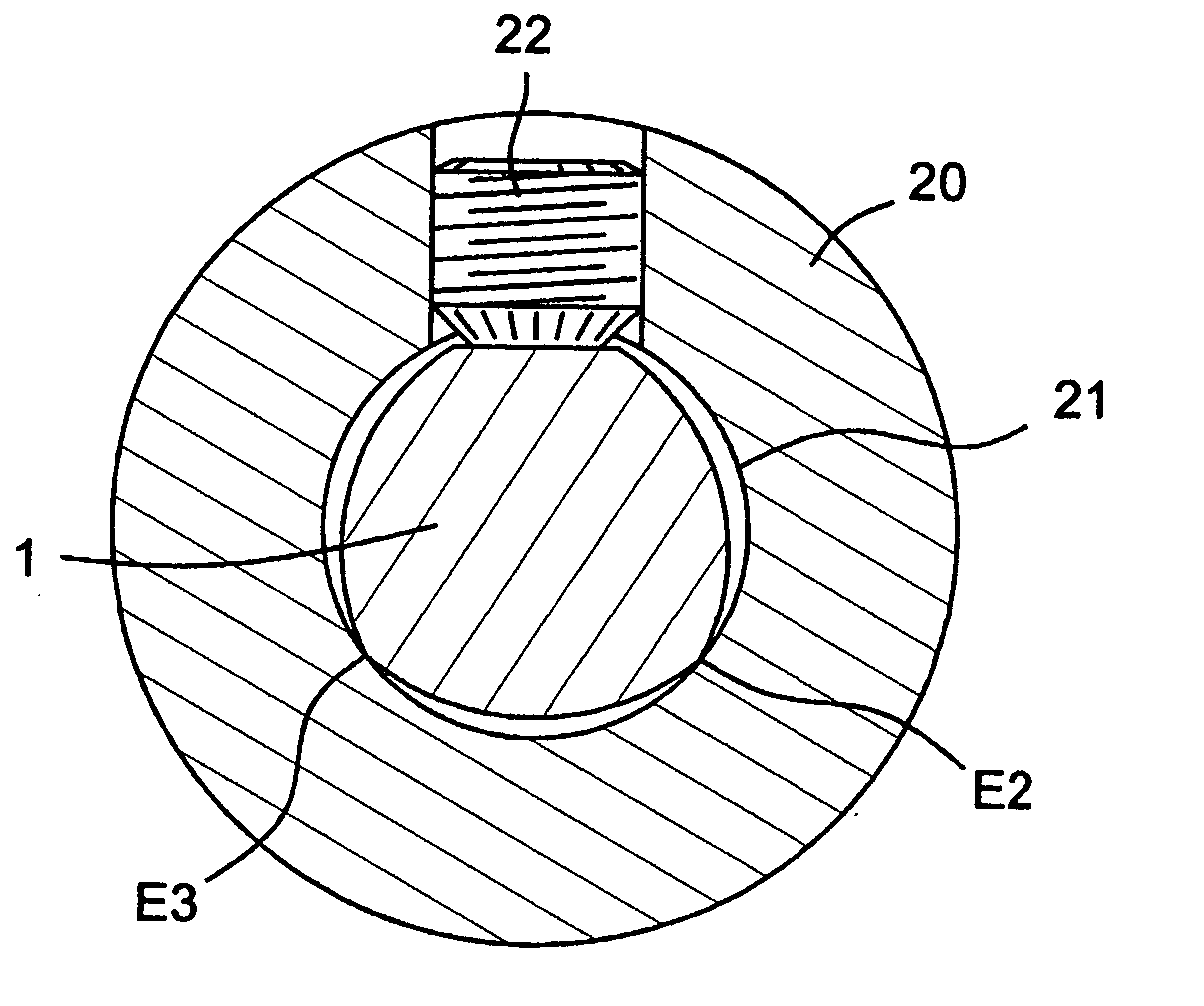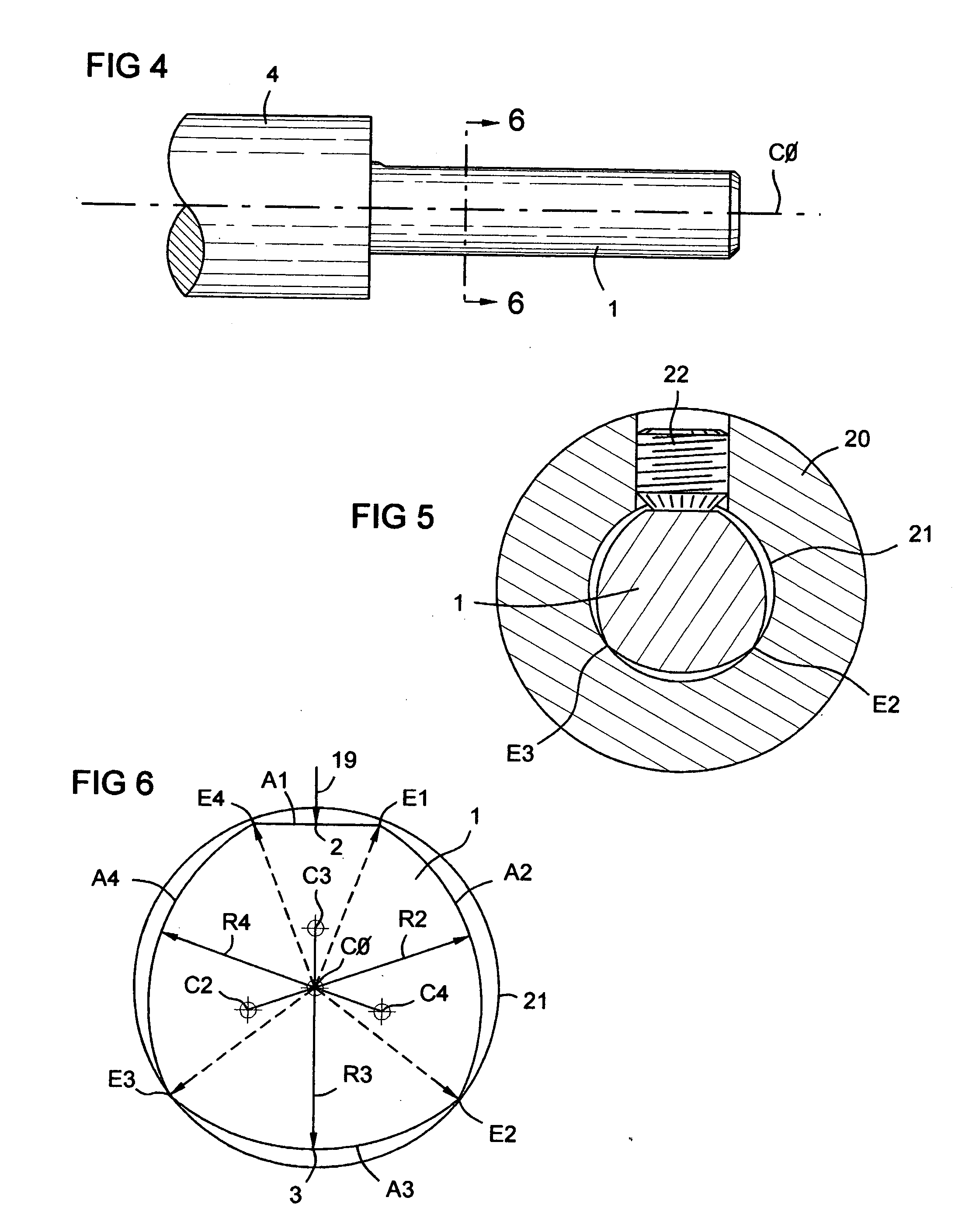Multi-radial shaft for releasable shaft holders
- Summary
- Abstract
- Description
- Claims
- Application Information
AI Technical Summary
Benefits of technology
Problems solved by technology
Method used
Image
Examples
Embodiment Construction
[0073] The invention is a tool shaft 1 for use with a working end 4 of a rotary tool such as a drill, milling cutter, or bore bar, or for use with a stationary tool such as a work-holding arbor or the like. The working end 4 of a rotary tool is driven in rotation about an axis of rotation 2 to perform cutting machining, torque transmission and the like. The shaft is designed to be inserted into, and precisely fixed in, a releasable supporting holder of a drive machine.
[0074] For this purpose the shaft is not cylindrical. It has a cross sectional circumference comprised of a series of arcs A1-A4. The curve A1 can optionally be flat. This segmented circumference extends along the portion of the shaft to be fixed in a holder. The arcs meet sequentially at their end points to form corners or edges E1-E4, two of which, E2 and E3, contact the bore 21 of the holder. A clamping element, such as a set screw 22 in the holder, presses against the midpoint of the first arc A1. This locks the s...
PUM
 Login to View More
Login to View More Abstract
Description
Claims
Application Information
 Login to View More
Login to View More - R&D
- Intellectual Property
- Life Sciences
- Materials
- Tech Scout
- Unparalleled Data Quality
- Higher Quality Content
- 60% Fewer Hallucinations
Browse by: Latest US Patents, China's latest patents, Technical Efficacy Thesaurus, Application Domain, Technology Topic, Popular Technical Reports.
© 2025 PatSnap. All rights reserved.Legal|Privacy policy|Modern Slavery Act Transparency Statement|Sitemap|About US| Contact US: help@patsnap.com



